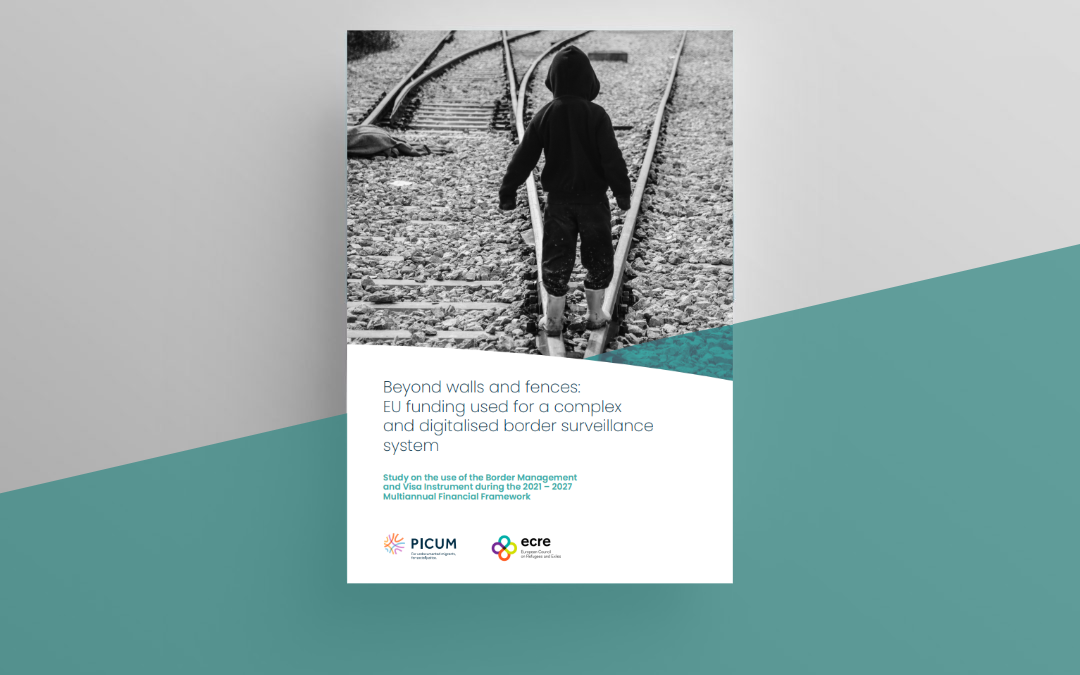ECRE and the Platform for International Cooperation on Undocumented Migrants (PICUM) have published a joint study in which they have analysed the use of the Border Management and Visa Instrument (BMVI) by EU member states (MS). The study finds that EU funding for border management has been used for infrastructure, equipment and activities that may pose significant risks for the fundamental rights of people at the EU’s external borders.
The BMVI has an initial budget of € 6.2 billion for the period 2021-2027 for equipment, personnel capacity, infrastructure and technology to be used at the EU’s external borders. The study finds that, to date, EU MS have received € 4 billion, an increase of 45% compared to the funding they received under the Internal Security Fund – Borders and Visa Instrument during the 2014-2020 programming period.
The analysis indicates that the BMVI has continued to increase since 2021 due to a combination of elements, including the addition of € 1 billion euros following the mid-term review (MTR) of the EU Multiannual Financial Framework (MFF) and transfers from other EU funds. In this regard, the BMVI programme for Greece received an additional € 620 million from the EU structural and investment funds. This brings the total amount of funding available for border management activities in Greece to more than € 1 billion despite concerns about how EU-funded actions in the country are contributing to fundamental rights abuses.
The European Commission (EC) has clarified several times that EU funding cannot be used for building walls or fences, as it considers them to be inefficient and disproportionate border control measures. However, the study shows that EU funding can already be used to support a combination of equally disproportionate measures such as permanent infrastructure and equipment, including for use by the European Border and Coast Guard Agency (Frontex), and activities in third countries. For instance, Estonia, Latvia, Lithuania and Poland are all investing in border surveillance technology either to complement or replace physical barriers at their borders, while other countries (e.g. Italy, Slovenia and Austria) are investing in vehicles for transporting migrants apprehended at borders to police outposts in areas where pushbacks regularly take place. A number of EU MS are also planning to acquire sniffer dogs to help border guards to patrol borders and chase people who have crossed borders into Croatia, Lithuania, Poland and Spain. In Croatia, dogs have already been used to threaten and bite migrants in order to push them back to the country’s borders. Other areas of investment include the deployment of various large-scale databases, purchases of equipment for Frontex and the deployment of migration liaison officers in third countries.
The BMVI can also be used to support procedures for the identification of vulnerable people and unaccompanied children, the provision of information to and the referral of people in need of international protection and victims of human trafficking, and the development of integrated child protection systems. However, the analysis reveals that EU MS are systematically deprioritising activities in the area of assisting and protecting people at borders as they foresee spending less than 0.04% of the funding available under the national programmes on them.
Finally, the study concludes that the monitoring and evaluation system, as well as the safeguards against fundamental rights breaches in EU-funded activities are not yet sufficiently developed to ensure proper accountability.
The study ends with a set of recommendations to both the EC and EU MS on the use of BMVI resources, particularly in the context of the implementation of the EU Pact on Migration and Asylum, and the MTR of the programmes that is due to take place by the end of 2024.

